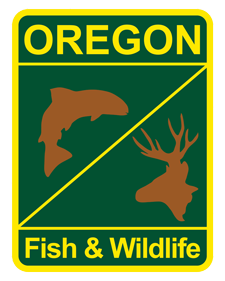Saltwater Fish Report for 9-27-2017
Clatsop County beaches reopen to razor clamming on Oct. 1 after 16-month closure
by ODFW
9-27-2017
Website

Razor clamming on Clatsop County beaches will reopen on Sunday, Oct. 1 after a 16-month closure.
Razor clamming in this area has been closed since July 2016 due to high levels of biotoxins found in the clams and an annual closure to protect newly set young clams that runs from July 15-Sept. 30 each year. While other parts of the state’s coast have been open to razor clamming, Clatsop County beaches are the most popular spot and account for 90 percent of Oregon’s harvest.
Oregon Dept. of Agriculture tests shellfish toxins twice per month, as tides permit, to determine if razor clams and other shellfish are safe to eat. Results from ODA’s two most recent tests (on Sept. 22 and Sept. 8) show clams are safe.
The last time Clatsop County’s season was open in summer 2016, razor clammers experienced a record year, with most reaching their daily bag limit of 15 in a short time. Clammers will find different conditions when they return on Oct. 1 as ODFW’s annual survey found significantly lower abundance of razor clams since surveys began in 2004.
“In 2016, abundance peaked and surveys estimated 16 million razor clams in the 18-mile stretch between the Columbia River south jetty and Tillamook Head,” says Matt Hunter, ODFW’s Shellfish Project Leader. “This year, the estimate is just 3 million clams in that area.”
“These low numbers are troubling, as they mean Clatsop beaches haven’t seen a significant recruitment event for two years,” continued Hunter. “But this recruitment issue is not isolated to just Clatsop beaches. It’s being seen on the entire Oregon coast and for Washington beaches, too.”
Razor clam populations are very cyclical and the population appears to be in a low abundance period, following a very high abundance period in 2015-16. However, current clams are larger, averaging about 4 ½ inches, with only a few clams smaller than 4-inches found. Surveys showed clams distributed sporadically along the entire stretch of the beach.
“While razor clam numbers are lower this year, clams are quite large,” Hunter said. “To be successful, clammers should be diligent, choose the best low tides and actively ‘pound’ to get razors to show.”
As always, the bag limit for razor clams is the first 15 dug, with no sorting or releasing allowed.
ODA tests for shellfish toxins twice per month, as tides permit, and closes seasons with ODFW when toxins reach an unsafe level. Clammers should always call the shellfish hotline (800-448-2474) or check the ODA website before harvesting clams.
More Reports
OR Department of Fish & Wildlife Reports
for Tuesday, September 26th, 2017Nehalem River: Nehalem River Fishing Report
Nestucca River: Nestucca River Fishing Report
Salmon River: Salmon River Fishing Report
Siletz River: Siletz River Fishing Report
Siuslaw River: Siuslaw River Fishing Report
Tillamook Bay: Tillamook Bay Fishing Report
Trask River: Trask River Fishing Report
Wilson River: Wilson River Fishing Report
Yaquina River: Yaquina River Fishing Report
Applegate Reservoir: Applegate Reservoir Fishing Report
Applegate River: Applegate River Fishing Report
Ben Irving Reservoir: Ben Irving Reservoir Fishing Report
Chetco River: Chetco River Fishing Report
Coos River: Coos River Fishing Report
Coquille River: Coquille River Fishing Report
Diamond Lake: Diamond Lake Fishing Report
Fish Lake : Fish Lake Fishing Report
Floras Lake: Floras Lake Fishing Report
Galesville Reservoir: Galesville Reservoir Fishing Report
Hemlock Lake: Hemlock Lake Fishing Report
Howard Prairie Reservoir: Howard Prairie Reservoir Fishing Report
Hyatt Lake: Hyatt Lake Fishing Report
Illinois River: Illinois River Fishing Report
Lake Marie: Lake Marie Fishing Report
Lake Selmac: Lake Selmac Fishing Report
Lemolo Lake: Lemolo Lake Fishing Report
Loon Lake: Loon Lake Fishing Report
: Lost Creek Reservoir Fishing Report
Plat I Reservoir: Plat I Reservoir Fishing Report
Smith River: Smith River Fishing Report
Tenmile Lakes: Tenmile Lakes Fishing Report
Willow Lake: Willow Lake Fishing Report
Pacific Halibut all-depth Central Coast subarea fishery ends for the year

9-26-2017
Oregon’s recreational summer all-depth halibut season in the Central Coast subarea has ended for the year because the quota has...... Read More

Website Hosting and Design provided by TECK.net